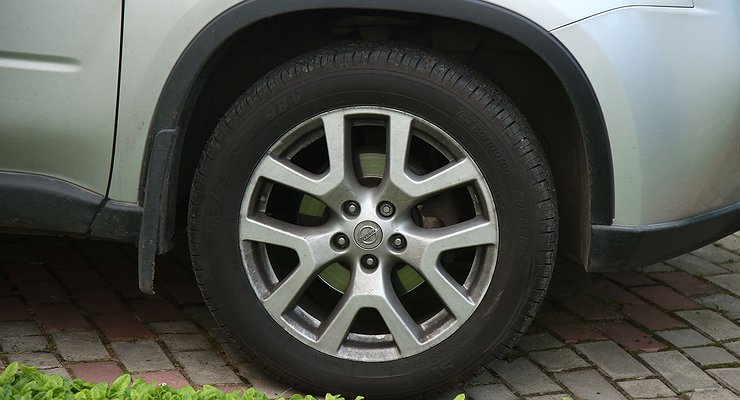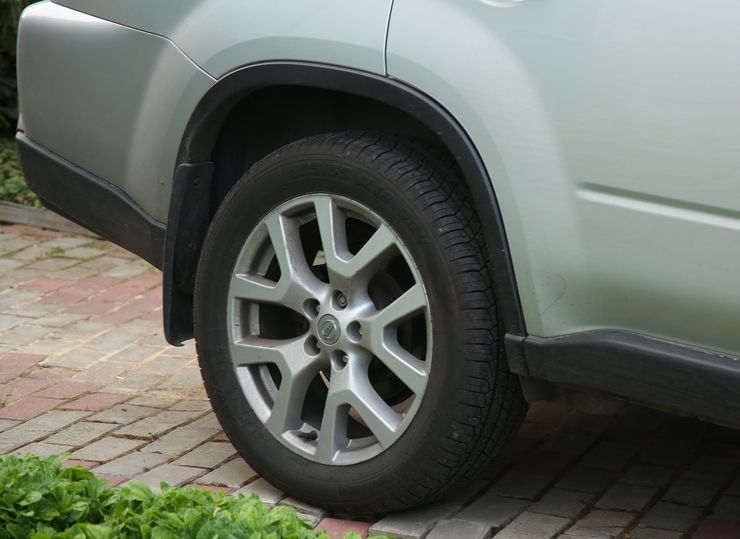Why alloy wheels suddenly start to rot
- July 27, 2022
- 0
Two or three metropolitan winters and alloy wheels are not only starting to age, but also look like post-apocalypse. Scratches and “disease control” – thanks to the marked
Two or three metropolitan winters and alloy wheels are not only starting to age, but also look like post-apocalypse. Scratches and “disease control” – thanks to the marked

Designed not only to decorate the car, but also to make the life of the suspension easier and more pleasant, alloy wheels are usually made of aluminum. By itself it does not rot or oxidize, it is light and plastic. The latter is also a “plus”, because a serious and sudden blow will be absorbed by the steering wheel, and not by a much more expensive body. However, in our latitudes, “casting” has an extremely unpleasant property – it quickly loses its appearance and sometimes even begins to corrode. Where? Of what?
The key point, of course, is our native road salt, which can corrode, it seems, even titanium. What can we say about aluminum? A thin protective varnish layer is easy to peel off, is subject to sandblasting and is not resistant to the reagent on its own. Especially if you don’t wash your car every week. Once the varnish is torn off, road salt begins to eat the metal, and there is only one way to stop such a “lunch” – to restore the painting. However, not only and not so much salt is to blame.
The fact is that in addition to classic rust – oxidation – there is also the so-called contact corrosion. It is observed when two metals that differ in electromechanical properties come into contact with each other. For example, iron and aluminum, or a hub and an alloy rim. Strangely enough, the bolt with which this disc is attached is also made of iron. Theoretically, the coat of paint should withstand this state of affairs, but where have you seen it on two or three year old discs? What about five year olds? That is it.
And now let’s add the temperature to our equation – the brakes are heated to 300-400 degrees in urban mode – as well as water. We get a powerful cocktail, from which even a high-quality “casting” of the brand will attract attention. What can we say about a Chinese craft made from an alloy of cans and foil?
There is another important factor: the chemical composition. It turned out that aluminum and its alloys are not friendly with them at all. Separately, it is worth mentioning the most famous of the car “fluid”, which regularly gets on the disk and makes it unusable. This, of course, is about brake fluid, which contains acid in its composition. But who remembers this when the brake cylinder leaked and the pedal fell to the floor?
However, the situation does not look hopeless: first of all, you can and should check the appearance of the wheels, regularly wash and clean them. And secondly, there are a wide variety of lubricants whose application to the hub will protect the cast disc from contact corrosion. It mainly concerns copper grease, with which you can save at a relatively low price both discs with hubs and nerves that burn out very quickly during the “field” tire mounting of a stuck wheel. Such processing twice a year – in spring and autumn, respectively, with seasonal installation – helps to save valuables, and wheels are now expensive.

Designed not only to decorate the car, but also to make the life of the suspension easier and more pleasant, alloy wheels are usually made of aluminum. By itself it does not rot or oxidize, it is light and plastic. The latter is also a “plus”, because a serious and sudden blow will be absorbed by the steering wheel, and not by a much more expensive body. However, in our latitudes, “casting” has an extremely unpleasant property – it quickly loses its appearance and sometimes even begins to corrode. Where? Of what?
The key point, of course, is our native road salt, which can corrode, it seems, even titanium. What can we say about aluminum? A thin protective varnish layer is easy to peel off, is subject to sandblasting and is not resistant to the reagent on its own. Especially if you don’t wash your car every week. Once the varnish is torn off, road salt begins to eat the metal, and there is only one way to stop such a “lunch” – to restore the painting. However, not only and not so much salt is to blame.
The fact is that in addition to classic rust – oxidation – there is also the so-called contact corrosion. It is observed when two metals that differ in electromechanical properties come into contact with each other. For example, iron and aluminum, or a hub and an alloy rim. Strangely enough, the bolt with which this disc is attached is also made of iron. Theoretically, the coat of paint should withstand this state of affairs, but where have you seen it on two or three year old discs? What about five year olds? That is it.
And now let’s add the temperature to our equation – the brakes are heated to 300-400 degrees in urban mode – as well as water. We get a powerful cocktail, from which even a high-quality “casting” of the brand will attract attention. What can we say about a Chinese craft made from an alloy of cans and foil?
There is another important factor: the chemical composition. It turned out that aluminum and its alloys are not friendly with them at all. Separately, it is worth mentioning the most famous of the car “fluid”, which regularly gets on the disk and makes it unusable. This, of course, is about brake fluid, which contains acid in its composition. But who remembers this when the brake cylinder leaked and the pedal fell to the floor?
However, the situation does not look hopeless: first of all, you can and should check the appearance of the wheels, regularly wash and clean them. And secondly, there are a wide variety of lubricants whose application to the hub will protect the cast disc from contact corrosion. It mainly concerns copper grease, with which you can save at a relatively low price both discs with hubs and nerves that burn out very quickly during the “field” tire mounting of a stuck wheel. Such processing twice a year – in spring and autumn, respectively, with seasonal installation – helps to save valuables, and wheels are now expensive.
Source: Avto Vzglyad
I’m Sandra Torres, a passionate journalist and content creator. My specialty lies in covering the latest gadgets, trends and tech news for Div Bracket. With over 5 years of experience as a professional writer, I have built up an impressive portfolio of published works that showcase my expertise in this field.